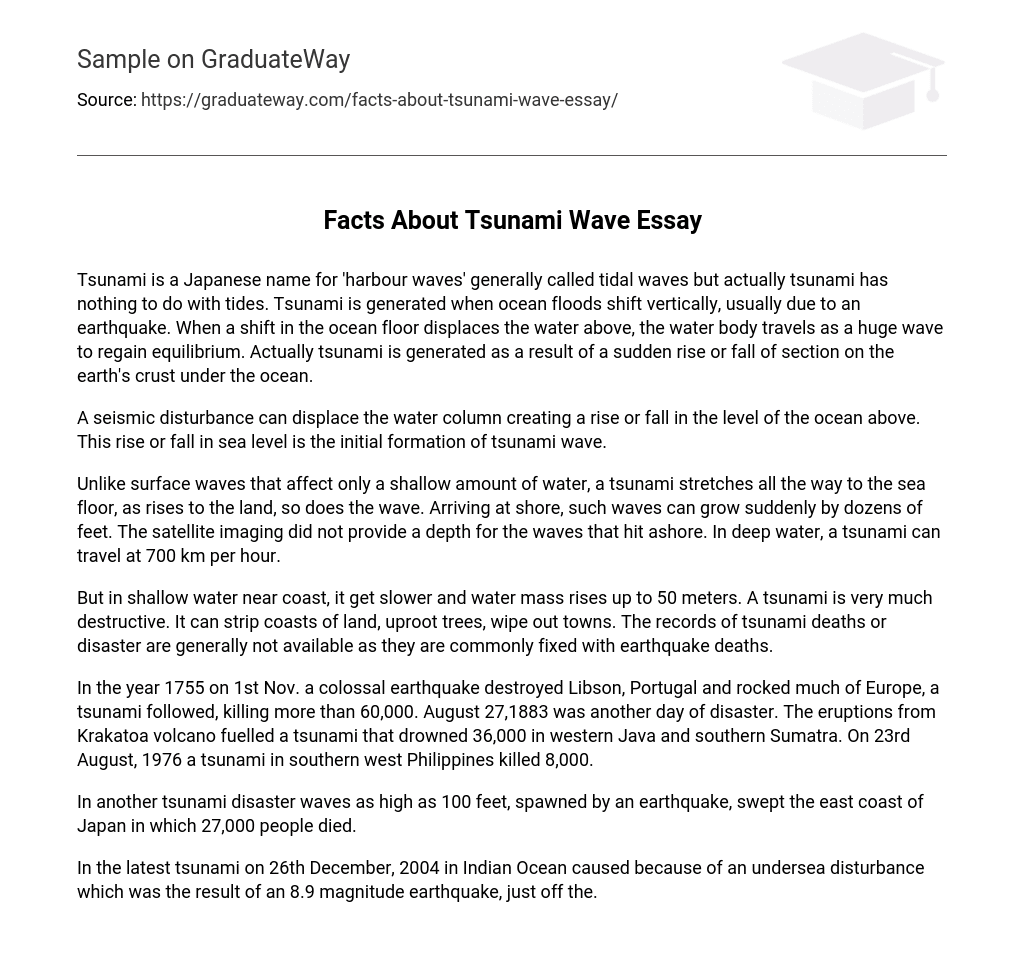Tsunami is a Japanese name for ‘harbour waves’ generally called tidal waves but actually tsunami has nothing to do with tides. Tsunami is generated when ocean floods shift vertically, usually due to an earthquake. When a shift in the ocean floor displaces the water above, the water body travels as a huge wave to regain equilibrium. Actually tsunami is generated as a result of a sudden rise or fall of section on the earth’s crust under the ocean.
A seismic disturbance can displace the water column creating a rise or fall in the level of the ocean above. This rise or fall in sea level is the initial formation of tsunami wave.
Unlike surface waves that affect only a shallow amount of water, a tsunami stretches all the way to the sea floor, as rises to the land, so does the wave. Arriving at shore, such waves can grow suddenly by dozens of feet. The satellite imaging did not provide a depth for the waves that hit ashore. In deep water, a tsunami can travel at 700 km per hour.
But in shallow water near coast, it get slower and water mass rises up to 50 meters. A tsunami is very much destructive. It can strip coasts of land, uproot trees, wipe out towns. The records of tsunami deaths or disaster are generally not available as they are commonly fixed with earthquake deaths.
In the year 1755 on 1st Nov. a colossal earthquake destroyed Libson, Portugal and rocked much of Europe, a tsunami followed, killing more than 60,000. August 27,1883 was another day of disaster. The eruptions from Krakatoa volcano fuelled a tsunami that drowned 36,000 in western Java and southern Sumatra. On 23rd August, 1976 a tsunami in southern west Philippines killed 8,000.
In another tsunami disaster waves as high as 100 feet, spawned by an earthquake, swept the east coast of Japan in which 27,000 people died.
In the latest tsunami on 26th December, 2004 in Indian Ocean caused because of an undersea disturbance which was the result of an 8.9 magnitude earthquake, just off the.





